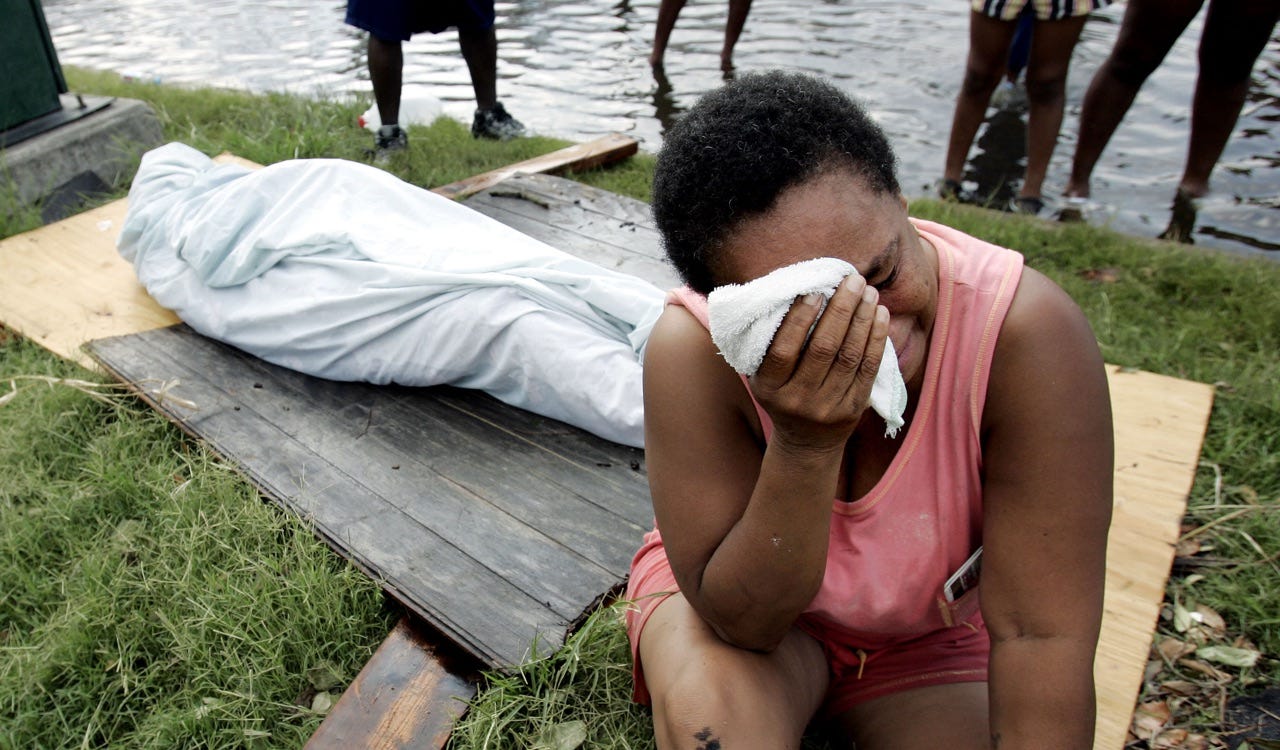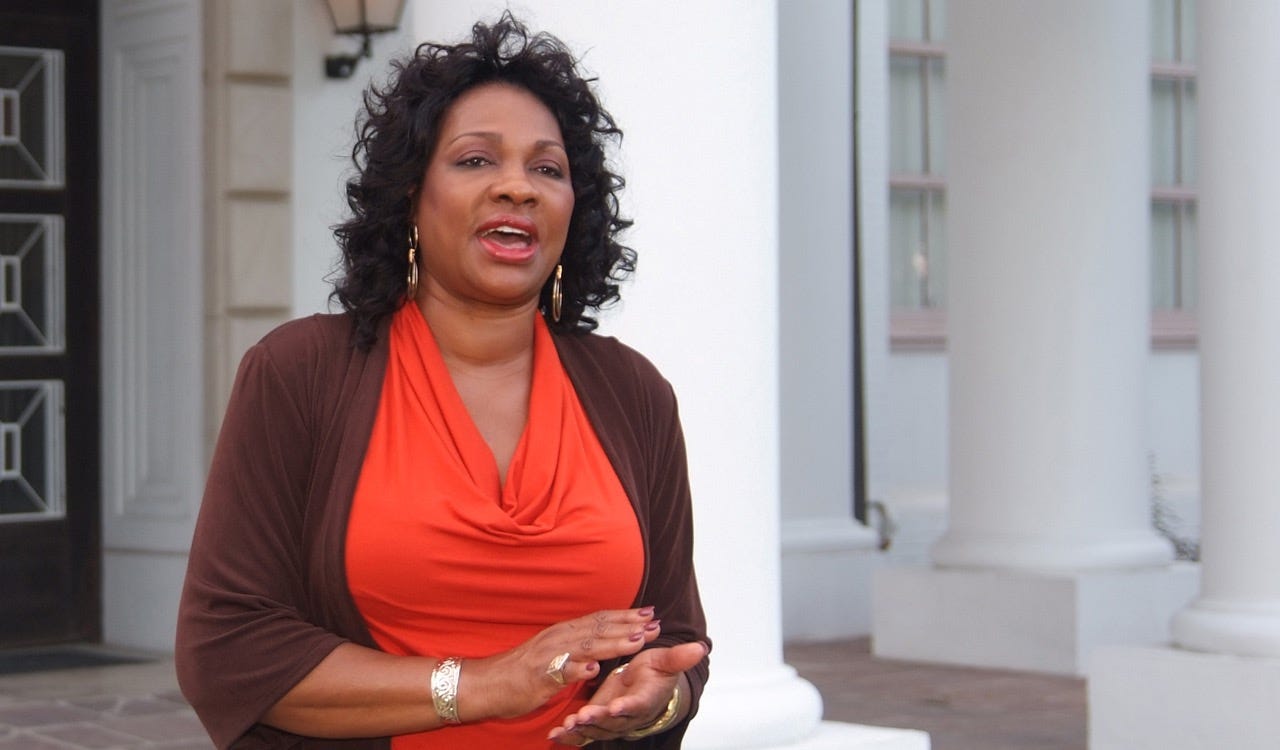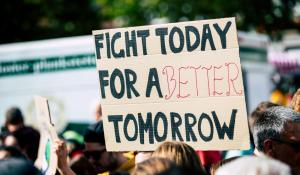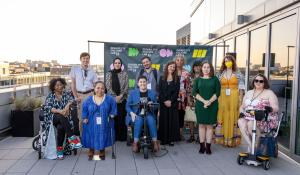
At the close of 2015, the nation was reeling from news that residents of Flint, Michigan, had been drinking and bathing in water contaminated with lead, a potent neurotoxicant. Though the mostly Black community had long been voicing concerns about the troubling quality of their drinking water, government officials assured them time and again it was safe.
Two years and countless deferred complaints and organized protests later, it finally hit mainstream news that the residents of Flint have been drinking and bathing in water contaminated with lead levels several thousand times higher than the federal maximum, because local officials simply failed to use the legally mandated water treatments that would have kept them from being poisoned. As a result, all 9,000 children under six in Flint who have been exposed to the tainted water are at a high risk for neurological damage. The most recent data, as of March 2016, say the water still isn’t clean.
While the travesty in Flint isn’t connected to the climate crisis, it is a profound illustration of what happens to communities of color across the country. They’re more likely to have toxic facilities sited near them, less likely to receive adequate protection to prevent disasters, and less likely to get the kind of immediate response White communities get when emergencies occur, says Dr. Beverly Wright, a sociologist and CEO of the Deep South Center for Environmental Justice (DSCEJ) at Dillard University.
If you’re a person of color, particularly Black or Latino, you’re more likely to live near toxic facilities. — Dr. Beverly Wright, CEO of the Deep South Center for Environmental Justice at Dillard University
The poisoning of Flint is a familiar scenario for those working on environmental and climate justice issues. And as the effects of the climate crisis grow increasingly serious, they can turn deadly for people of color in ways that their White neighbors aren’t yet facing, says Dr. Wright.
“[Communities of color] are in double jeopardy” from the climate crisis,” she says. “First, if you’re a person of color, particularly Black or Latino, you’re more likely to live near toxic facilities, like petrochemical companies here in Louisiana, producing toxins that shorten and impact quality of life. And then, [our communities] are on the front line of impacts from climate change, living in places where there could be more floods and a higher incidence of different [climate-related] diseases. For poor communities, there’s also not having access to health insurance or medical services. Communities of color are disproportionately affected by all of these things.”
It’s beyond time to do something about it. That’s why it’s so important to expand the conversation around climate justice — ensuring that all people, regardless of race and ethnicity, get equal protection from the worst effects of climate change.
While suffering disproportionately from the climate crisis, communities of color are also leading the way toward change that works for all.
Living in Toxinland
Dr. Wright’s lifetime body of work shows a disturbing pattern — namely that people of color “are differently impacted by industrial pollution [and] can also expect different treatment from the government.”
She and her peers have expanded their definition of environmental justice in recent years to include the term “climate justice,” since they say the same is true when it comes to polluting fossil-fuel facilities — communities of color experience worse effects and receive fewer protections than White communities.
Specifically, communities of color:
- Are more likely to breathe in polluted air. Communities of color breathe in 40 percent more polluted air than White communities across the US, according to the NAACP’s 2012 “Coal-Blooded” study.
Fossil-fuel technology is directly to blame for some of this pollution. For example, a 2014 study out of the University of Minnesota confirmed that people of color in the US are 38 percent more likely to be exposed to the asthma-causing pollutant nitrogen oxide from climate-warming cars, construction equipment, and industrial sources like coal plants. - Are more likely to live near coal plants. Though African-Americans make up 13 percent of the US population, a startling 68 percent live within 30 miles of a coal-fired power plant, compared to 56 percent of Whites. This zone is where residents breathe the most resultant pollutants — which can cause a range of health problems, from heart attacks to birth defects to asthma, states the NAACP. Although Latinos make up 17 percent of the US population, 39 percent live within a 30-mile radius from a coal plant.
Some Native American lands are home to large coal reserves, resulting in tribes across North America feeling the toxic effects from coal mines and plants. - Are more likely to live near toxic sites, including those housing waste from fossil-fuel infrastructure. For example, Dr. Bullard, a professor at Texas Southern University known as the “father of environmental justice” for his pioneering work in the field, points to the aftermath of the 2010 BP oil spill.
When a BP underwater oil well burst in the Gulf of Mexico in 2010, it leaked a mind-boggling 94 to 184 million gallons of oil into Gulf. BP hired private contractors to clean up the oil-coated sand and refuse from the 120 miles of Gulf coastline the well had polluted.
While the spill and the environmental devastation it wreaked are well-known, what is less known is that the waste from the shoreline clean-up effort “was trucked to landfills mostly in Black communities in Louisiana and Alabama and Florida,” says Dr. Bullard.
It was a case of history repeating itself: In 2009, 3.9 million tons of coal ash spilled from a Tennessee Valley Authority power plant. In the aftermath, the toxic coal ash was actually shipped more than 300 miles from the power plant site by train, where it was dumped in a landfill located in “rural and mostly Black Perry County, Alabama,” he says. (See our piece It Doesn’t End with Flint for more on this disaster.)

Greater Environmental Impacts
The United Nations International Panel on Climate Change’s (IPCC) 2013 climate change science report states with “90 to 99 percent certainty” that more frequent and more severe weather events like droughts, intense heat waves, and “more frequent/ intense heavy rainfall events” are a consequence of the climate crisis. And it is communities of color that are bearing the brunt of those events, say many experts.
Indigenous nations around the world, for example, are already being affected by climate change, write Alan Parker and Zoltan Grossman of the Northwest Indian Applied Research Institute (NIARI), in Asserting Native Resilience (Oregon State University Press, 2012).
Several Alaskan and Pacific Northwest Native communities that have long subsisted on traditional hunting and fish efforts have seen an unprecedented drop in their food supply, because of rising temperatures wreaking havoc on fish and wildlife, write Parker and Grossman. And many Alaskan natives may have to relocate entire villages due to thawing permafrost caused by global warming.
“Native rights are primarily place-based rights, based on their longtime occupation of Indigenous territories,” they write. “Climate change shifts and disrupts plant and animal habitats, and in doing so, forces cultures to adapt to these conditions or die.”
Climate change can be a culture-killer for some tribes, as well. “The loss of culturally important species on which traditional knowledge depends will make it more difficult for elders to practice and pass their knowledge on to future generations,” note Parker and Grossman.
Other communities of color are also feeling the heat. In California, for example, record heat waves and droughts are affecting Latino communities hardest throughout the state, says Mario Santoyo of the California Latino Water Coalition.
As state farmers see their fruit and vegetable crops shrink from lack of water, it’s the state’s majority-Latino farmworkers who are struggling most as a result, as they scramble to get enough hours picking crops to earn a livable wage.
“Being a farmworker is a hard thing. Your average US citizen is nowhere near interested in doing that kind of work,” says Santoyo. “And when farmers don’t have enough water, they may adjust the number of acres they farm or the types of crops they harvest. In both cases, they need less labor.”
So, he says, Latinos are first to be displaced from jobs, and they’ll often be among the last to recover economically. “When you look at farmers and developers, [the water crisis] has an impact on them without question. But also, a good proportion have the financial resources to adjust. Their world doesn’t end — not the way it hurts the Latinos.”
Santoyo’s parents were farmworkers, and he worked in the fields himself as a youth. But many Latino parents, including his own, labor on farms so their children can have a better life. He and his siblings all went to college, and he says that’s the case for many farmworker families in California’s Central Valley.
Latinos are first to be displaced from jobs, and they’ll often be among the last to recover economically. — Mario Santoyo, California Water Coalition
However, even Latinos who may not be struggling economically still find the water crisis impacting them disproportionately, says Santoyo. “In 2006, when we formed [the center], if you looked who makes decisions [about water] in the state of California, the one thing you would not have found were brown faces.”
So the Coalition engaged with local and state legislators, drummed up community support, and regularly communicated with the state Latino Caucus. Today, thanks to these efforts, “there’s been some progress,” says Santoyo, “though it’s nowhere near where we want it to be.”
“We’re trying to wake up those who need to understand,” he says.

A Legacy of Unequal Protection
One of the most important elements of climate-justice movement is the effort to ensure that communities of color get equal protection from their government officials from the worst impacts of the climate crisis. Nearly every expert we talked to pointed to the fallout from Hurricane Katrina as the poster-child example of climate injustice.
It must be said that experts are uncertain just how much Katrina’s severity was tied to global warming. However, recent studies, including the IPCC’s 2013 climate change science report, have found that over the past 30 years, the intensity and duration of hurricanes have increased significantly, which may be due at least in part to the higher sea levels and warmer ocean temperatures caused by climate change.
Dr. Wright grew up in New Orleans, which has seen its share of stormy weather. But prior to Katrina, she says, hurricanes in her experience had just been synonymous with “heavy rain and a party” for her and her family.
Then Katrina struck. The Category 5 hurricane came in from the east, over Lake Ponchartrain and the Gulf of Mexico, and hit the primarily African-American neighborhoods of New Orleans East and the Lower Ninth Ward the hardest. Over 80 percent of the homes lost in Katrina belonged to African-American residents.
And Dr. Wright points to a history of government neglect of Black residents as the cause.
To trace that history, you have to go back to 1965, the year the city experienced another devastating storm, Hurricane Betsy, which also swept through New Orleans East and the Lower Ninth Ward, taking hundreds of lives, mostly Black.
Since the levee boards are mostly made up of people in wealthy areas, those people were always on top of trying to get their properties protected. — Dr. Beverly Wright
In the aftermath of Betsy, the city and state government naturally agreed that the levees protecting New Orleans from floodwaters needed to be shored up. But the money the federal government poured into post-Betsy recovery wasn’t distributed equitably.
In New Orleans, Dr. Wright explains, there were and still are levee boards who decide how federal funds to build or support levees are spent.
“Much of the money went to Lakeview, which is predominantly White, and not to areas where there were now no levees and would be flooded if there was another storm,” she says. “Since the levee boards are mostly made up of people in wealthy areas, those people were always on top of trying to get their properties protected.”
As a result, a new plan to protect New Orleans East and the Lower Ninth Ward — the neighborhoods hardest hit by Betsy — wasn’t even launched until nearly 30 years later, says Dr. Wright.
People are saying we have to make our communities more
climate-resilient, but it has to be a resilience that cuts across
race, class, and geography. — Dr. Robert D. Bullard
Fast forward 40 years to 2005, when Hurricane Katrina was approaching the Crescent City, and the levees protecting White neighborhoods like Lakeview were “in place, extremely high, and supposed to withstand the storm,” she says.
But as Katrina hit those same Black neighborhoods that had been devastated by Betsy, the levees protecting them were the weak points in the system. And they broke. “Our legislators forever and always had been protecting White people first,” she says. “Had they done it for everyone, it would have been a strong levee. But because they didn’t, the storm washed away the part that was supposed to protect them, too.” And so she watched the waters rise around and into her beautiful home in the upscale African-American neighborhood of New Orleans East. When she returned after evacuating, she says her community looked like a bomb had gone off. Though her house was still standing, everything inside was damp and covered with mold. She had to use a breathing apparatus just to pick her way through the wreckage, since high levels of lead, arsenic, and the carcinogenic benzopyrene contaminated the air and soil. As the keeper of her family’s photo archives, she was devastated to find that all of her treasured pictures were gone.
Although Black residents had been hardest hit by the storm, they once again found themselves shunted to the back of the line for government disaster assistance. In fact, they actually found themselves further victimized by it.
“African-American New Orleanians watched with horror as the first rebuilding plans were presented to the city council,” she writes in The Wrong Complexion for Protection (New York Univ. Press, 2012). “The map clearly showed that the areas slated for immediate redevelopment were those that had received the least amount of water — areas where White citizens lived. The areas that were mostly inhabited by African Americans, specifically New Orleans East and the Lower Ninth Ward, were not slated for redevelopment and were instead to be converted to green space.’ With one stroke of a pen, our land was being taken away and our inheritance lost.”
We’re trying to wake up those who need to understand. — Mario Santoyo, California Latino Water Coalition
Today, Dr. Wright and her colleagues at the DSCEJ provide legal assistance and run classes to help people learn their rights in dealing with climate and environmental disasters, and they also train people in skills needed to cope, such as mold and asbestos mitigation, weatherization, and green construction. While the center and other activists eventually helped funnel federal funds into and obtain local permission for rebuilding parts of the Lower Ninth Ward and New Orleans East, they continue to battle for equal protection from future Katrinas.
The good news, Dr. Wright says, is that the levees have finally been strengthened all around, and the most vulnerable areas of the city are better protected now. But Bob Jacobsen, an engineer who worked on the eastside levees post-Katrina, cautions that they’re only engineered to national flood-insurance standards —n ot to protect against another Katrina.
The city’s evacuation plan needs to be comprehensive and equitable — and whether it is remains to be seen.
Join the Conversation
Green America published an issue of Green American dedicated to amplifying the voices of those on the front lines of the climate crisis, working to protect the most vulnerable areas around the world. No matter what your background is, it’s vital to join the climate-justice conversation where you live — and work to ensure that everyone is included.
“People are saying we have to make sure that we make our communities more climate resilient, but it has to be a resilience that cuts across race, class, and geography,” says Dr. Bullard. “You can’t make one community resilient. If the weakest part breaks, then everyone is placed at risk.”







